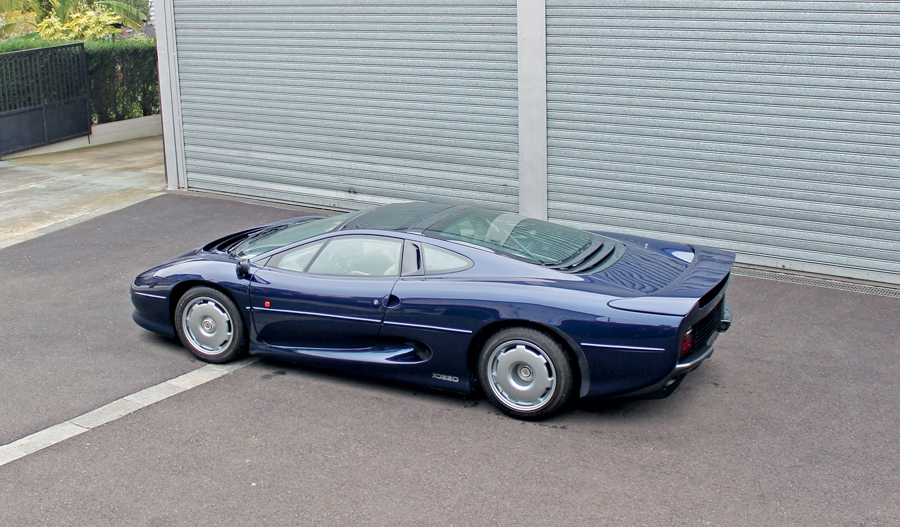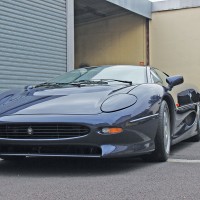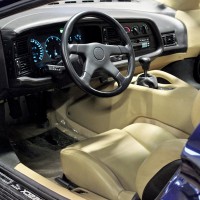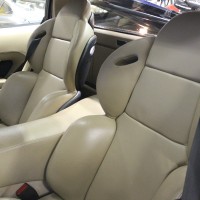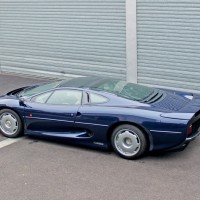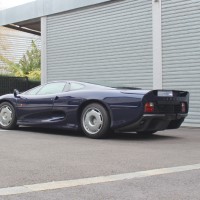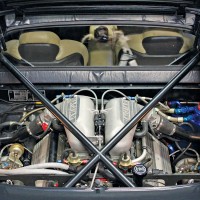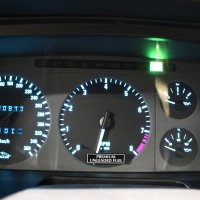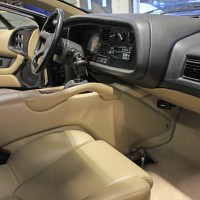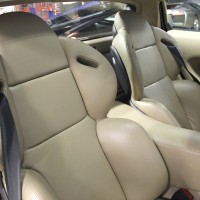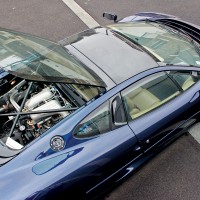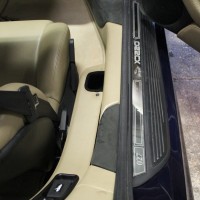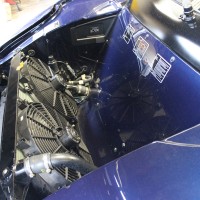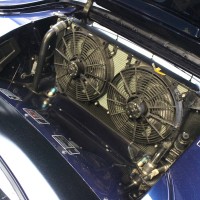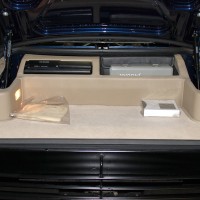SCM Analysis
Detailing
| Vehicle: | 1992 Jaguar XJ 220 |
| Years Produced: | 1992–94 |
| Number Produced: | 275–281, depending on your source |
| Original List Price: | £470,000 |
| SCM Valuation: | $180,000–$210,000 |
| Tune Up Cost: | (full service at Don Law Racing): $10,875 |
| Distributor Caps: | £45 ($70) |
| Chassis Number Location: | Plate on right side of engine bulkhead |
| Engine Number Location: | Left side of engine near gearbox flange |
| Club Info: | www.jaguarownersclub.com |
| Website: | http://www.xj220data.com |
| Alternatives: | 1990–98 (pre-facelift) Lamborghini Diablo, 1998–ongoing Aston Martin V8 Vantage V600, 2005–11 Bugatti Veyron 16.4 |
| Investment Grade: | B |
This car, Lot 197, sold for $331,963, including buyer’s premium, at Artcurial’s Rétromobile Sale in Paris on February 6, 2015.
Along with Artcurial’s sale of a 220 in Paris last November at $264k, Silverstone’s $387k for the ex-Sultan of Brunei car just days later and another in this sale (“026”) at $291,822, this is further evidence that the XJ 220 is picking up speed in a rehabilitation that began to pull prices out of the doldrums — as low as $120k at one point in 2002 — about three years ago.
There were several reasons for the car’s slump. The main one is that from the time of the concept car’s announcement at the 1988 British International Motor Show, the hardware was eagerly awaited and speculators were fighting to plonk down their £50,000 deposits and be allocated one of the 350 chassis numbers, eyeing a quick profit in a period when classic car prices last truly soared.
Jaguar took 1,500 deposits, but by the time the cars appeared from TWR, which actually made them, the collector car bubble had burst (déjà vu, anyone?). And, rather than having V12/4×4 drivelines, expediency to meet the 1992 promised production deadline meant a twin-turbocharged version of the 3.5-liter V64V motor from the Metro 6R4 rally car (conveniently available following the outlawing of Group B), driving only the rear wheels.
This caused many an investor to “choose not to exercise their purchase options,” or “wriggle out of their contracts,” as the less squeamish might put it.
Also, the cars were rather, er, wide — and a bit of a tight fit on narrow British roads. As a result, many were put away as investments, hoping for brighter days, and only occasionally came on to the market with low mileages to test the water at what appeared to be bargain prices. Elton John had one, and I remember it doing the rounds of the trade in depressingly ever-decreasing circles about 15 years ago.
Now on a fast rise
But time heals. The “Thunderbirds” styling has come into its own, now looking very period. The 220 is not intimidating to drive (trust me on this one), as visibility out of it is much better than from most supercars from the GT40 and Countach onwards. The car is actually fractionally (one inch) narrower than the most accessible member of the 200-mph club of the late ’90s — the Lamborghini Diablo. However, the Jaguar is considerably longer. The Jaguar’s running costs can be frightening, but then so is properly looking after a Ferrari F40.
This car — with sill plate number 027 — is actually two chassis numbers earlier than “026.” It was always going to raise interest on the basis that it had only covered 813 km (505 miles) and had never been registered.
Even the limited mileage had stone-chipped the front a little, so let’s assume it’s had a few high-speed blasts on motorways (well, it would be rude not to…). The driver’s upper seat bolster was a little worn from weekly climbs in and out, but otherwise it was pretty much like new.
The car’s elderly owner had clearly gone to some pains to prevent the doors touching the walls of his parking space, and the carpets still had their original plastic covering, save for one hole under the throttle pedal where he had indulged his deepest XJ 220 fantasies.
Automobiles T.S. of Paris looked after the car, and, although I didn’t see it, Toni Sisinni said that the brakes, wheels and tires show no wear and have never been changed.
The costs of a sedentary life
Although the purchase price still looks a bargain for a car of such huge capabilities, there’s more to spend.
Don Law Racing in Staffordshire is the world’s foremost 220 specialist shop, and there were 22 cars in for service from all over the world in early 2015.
“Any 220 that’s not been run or serviced for a while will need £20,000 [$30k-plus] spending on it,” Law said. “£10k of that is for a major service including belts and to change the fuel tank, which is an emissions-control item lifed at five years, and the rest is going through the car and changing safety-related items, such as main fuel pump, fuel and brake hoses, master cylinders and so on. Would you want to drive a car with 20-year-old rubber seals?”
On the 220, the engine has to come out for the two-year service, which includes cam belts and clutch and costs £5800, plus VAT of 20% in England, which puts the total around the thick end of $11,000.
A bargain at the price
On the auction day, this car neatly split the upper and lower estimates. Although 220s are slowly catching up with their original sticker prices, they are still nowhere near the price of an F40 or even an Anniversary Countach, although they have overtaken the Diablo — which won’t be appreciating any time soon.
All this tells us that if you want an eyeball-peelingly fast icon of the 1990’s (complete with very Rover Group-vintage swathes of neutral-tone leather and velour inside), the time is now. ♦
(Introductory description courtesy of Artcurial Motorcars.)
